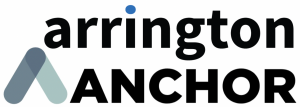
We have been strong supporters of Terra/Luna since 2018. We’ve watched the product grow and multiply, and today the ecosystem includes a synthetic asset platform called Mirror, the borrow lend protocol Anchor, and a flourishing ecosystem of nascent products and primitives.
The Anchor Protocol is designed to offer savers a fixed income yield initially targeted at 20%. Anchor generates yield from staking returns from multiple proof of stake blockchains that borrowers use to collateralize their loans.
We have participated in many aspects of the Anchor ecosystem — as investors in the initial token issuance, as a borrower and as a lender.
Until now, though, lenders had some exposure. There are two primary types of risk to lenders. First, smart contracts can have vulnerabilities and can be hacked. Second, the UST stablecoin, like most stablecoins, has a “depegging” risk where the value diverges from the target asset price (in this case U.S. dollars).
Today Terra announced a solution to both of these risks. Their native insurance protocol, Ozone, has now been merged into a third party insurance product called Risk Harbor.
They also announced a Bitcoin liquidity pool to mitigate depegging risk. If depegging occurs, this pool will be used to stabilize the price of UST.
With these new risk mitigation products, we feel comfortable launching our newest fund: The Arrington Anchor Yield Fund.
Crypto natives can already use Anchor and will soon be able to add Risk Harbor based insurance. But there are non-crypto native investors who also want exposure to Anchor yield. We are launching this new fund to serve these investors.
The fund is anchored by Arrington Capital partners and capital from Terraform Labs itself. We are initially limiting the fund size to $100 million and qualified investors.

